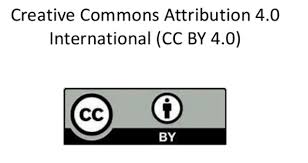1. Effective antibiotics against pathogenic bacteria isolated from Herring and Fesikh’s salted fish widely consumed during the national Egyptian day of Sham El-Nessim
DOI:
https://doi.org/10.47440/JAFE.2022.3101Keywords:
Antibiotic susceptibility, bacterial isolates, Herring and Fesikh fishAbstract
Herring and Fesikh are the most popular traditionally smoked and salted fish in Egypt, especially on the day of Sham El-Nessim occasion. Consuming these traditionally manufactured products exposes consumers to some microbial infection. In this study, the microbial content of Herring and Fesikh samples collected from Egyptian markets located at Cairo and Alexandria cities has been examined. Also, the antibiotic-susceptibility pattern for the isolated pathogens was evaluated against the commonly used antibiotics. The results revealed that the mean values of total plate count, halophilic microorganisms, anaerobic spore formers, E. coli, Staphylococcus aureus, and total molds and yeasts were 5.2, 4.5, 1.4, 1.3, 4.3, and 4.3 log CFU/g of Herring samples, respectively, and 3.4, 2.5, 2.1, 2.6, 2.8 and 2.9 log CFU/g of Fesikh samples, respectively. For Herring samples, E. coli isolates showed multi-resistance against four cefoperazone, piperacillin, cefotaxime, and trimethoprim/sulphamethoxazole antibiotics, while Staphylococcus aureus isolates were only resistant to clindamycin. Concerning Fesikh samples, Staphylococcus aureus isolates had a multi-resistance pattern against seven antibiotics (clindamycin, azithromycin, cefoperazone, cefadroxil, piperacillin, amoxicillin, and cefotaxime). Noteworthy, the results of the antibiotic-susceptibility test revealed that antibiotic classes, which had significant effectiveness against the isolated bacteria, can be arranged as: aminoglycosides ≥ cephalosporines ˃ tetracyclines.





 Publisher: Society of Agriculture, Food and Environment | ISSN (Online Version): 2708 - 5694
Publisher: Society of Agriculture, Food and Environment | ISSN (Online Version): 2708 - 5694 